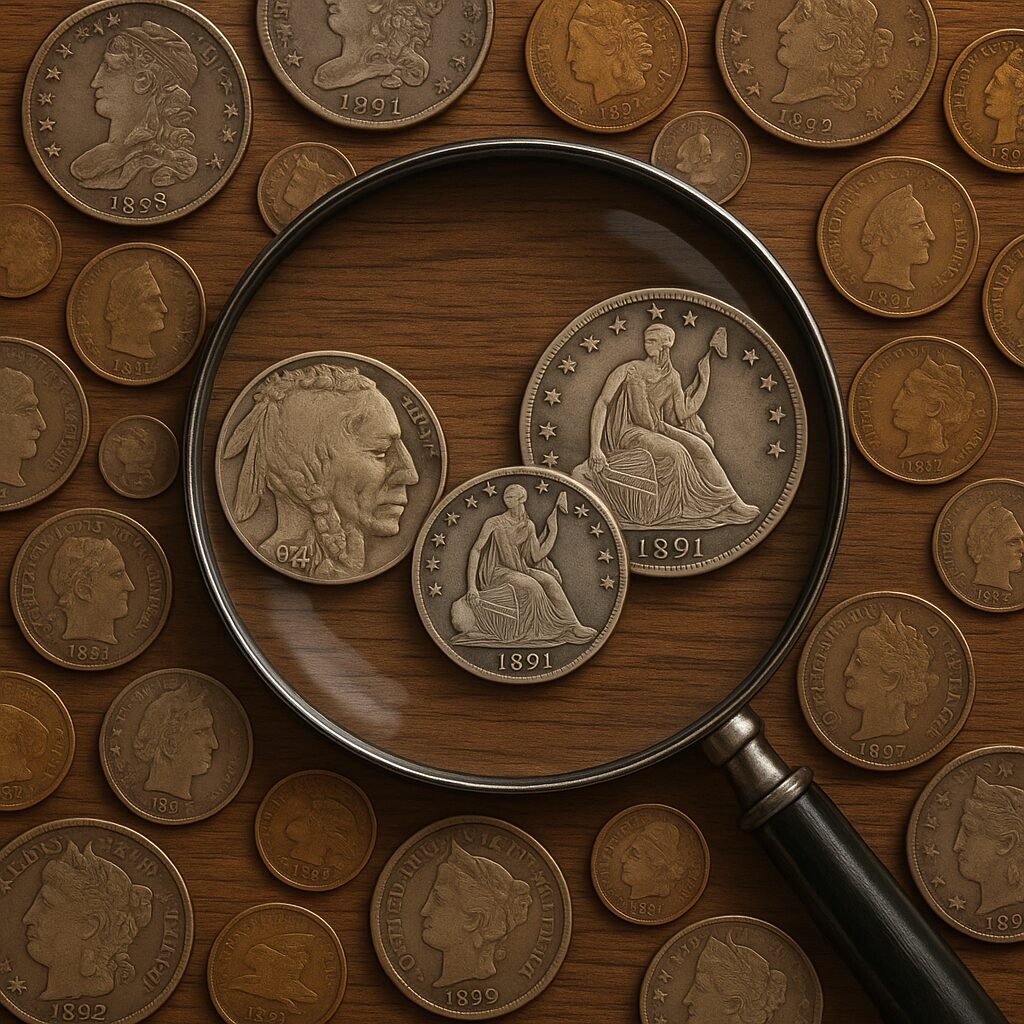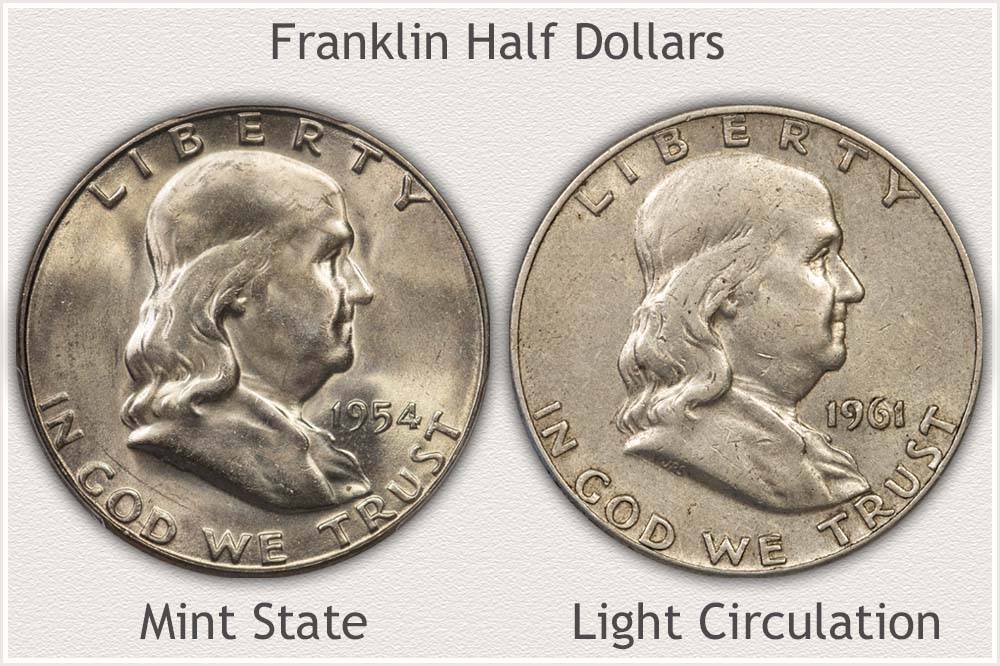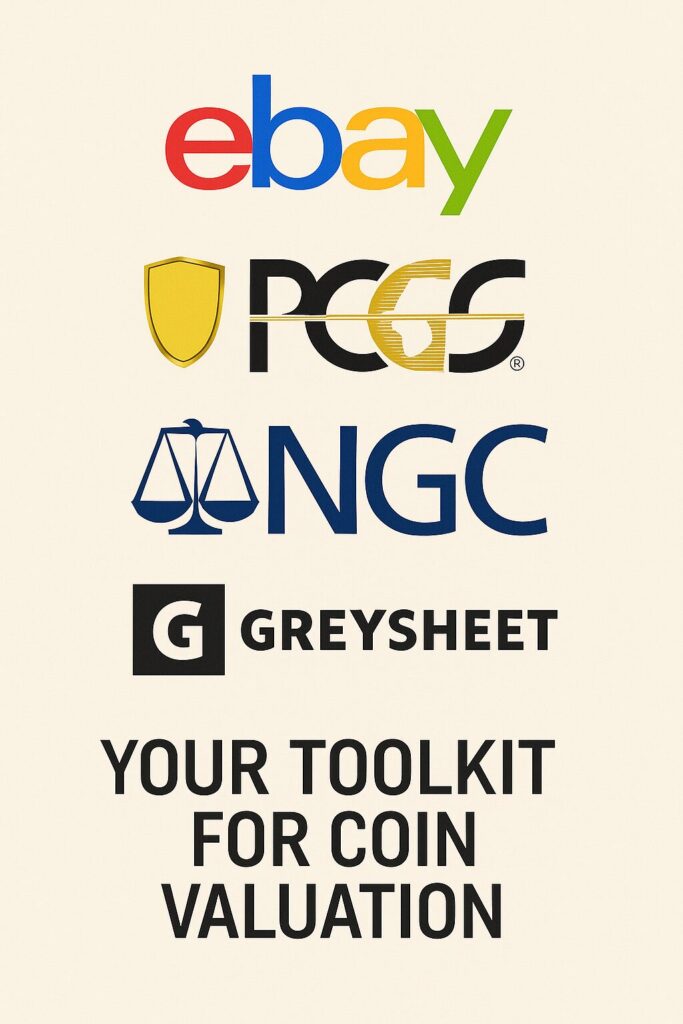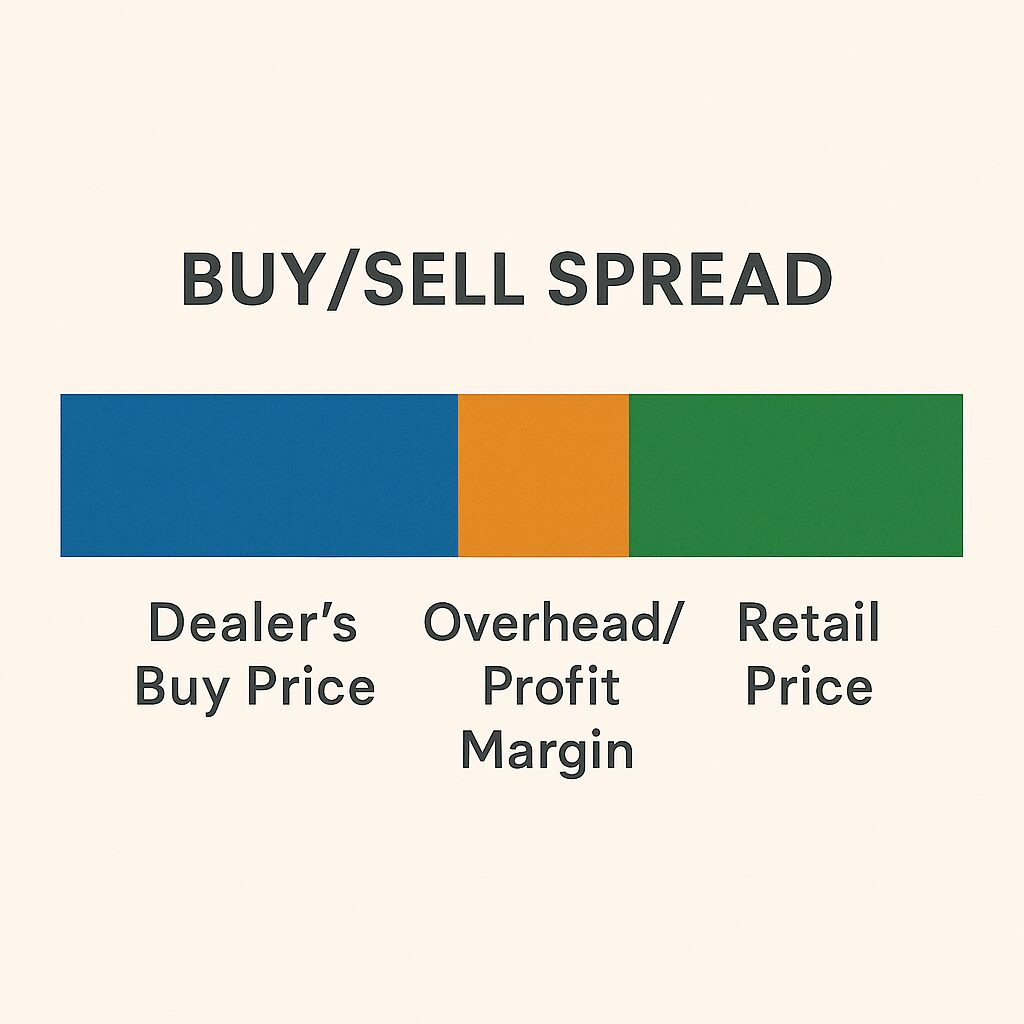Welcome to the fascinating world of coin collecting! If you’ve stumbled upon an old coin or are starting to build your collection, one of the first questions that likely springs to mind is, “What is my coin worth?” or “How much is this coin worth?” This is a common and crucial question for any numismatist, whether a curious beginner or a seasoned collector. Understanding the value of your coins is not just about potential monetary gain; it’s about appreciating the history, rarity, and artistry encapsulated in these small metal discs. This comprehensive guide is designed especially for newer collectors to navigate the often-complex process of accurately pricing rare US coins. We will delve into the intricacies of coin grading, explore various reliable pricing resources, and shed light on the nuances of the coin market, including how dealers operate. By the end of this post, you’ll have a much clearer understanding of how to determine the potential value of your US coins and approach the hobby with greater confidence and knowledge. Get ready to unlock the secrets behind your pocket-sized treasures!

Understanding Coin Grading: The Sheldon Scale Explained
Before you can accurately determine “what is my coin worth?”, you must first understand its condition, or grade. In the world of numismatics, the condition of a coin is paramount to its value. The most widely accepted system for grading US coins is the Sheldon Scale, a 70-point numerical scale developed by Dr. William Sheldon in 1949. Originally conceived for Large Cents, its principles were later adapted and expanded by the American Numismatic Association (ANA) and major grading services like PCGS (Professional Coin Grading Service) and NGC (Numismatic Guaranty Company) to apply to all US coins.

The Sheldon Scale ranges from PO-1 (Poor) to MS-70 (Mint State Perfect) or PR-70 (Proof Perfect). Here’s a simplified breakdown to help you understand the main categories:
Circulated Coins (Grades 1-58): These are coins that have been used in commerce and show signs of wear.
- Poor (PO-1): The coin is identifiable, but most details are obliterated. The date might be barely legible or completely worn away.
- Fair (FR-2): Enough of the design is visible to identify the coin type and date, but it’s heavily worn.
- About Good (AG-3): Most of the design is outlined, and the date is visible, though rims are often worn into the lettering.
- Good (G-4, G-6): The design is outlined with some details visible. Rims are mostly intact, and major legends are readable.
- Very Good (VG-8, VG-10): Major design elements are clear, though flat. For coins with “LIBERTY” on the headband (like Morgan Dollars or Barber coinage), some letters might be visible.
- Fine (F-12, F-15): Moderate, even wear is apparent. Major design elements are clear, and all letters in “LIBERTY” (if applicable) are visible but may be weak.
- Very Fine (VF-20, VF-25, VF-30, VF-35): Light to moderate wear is visible on the highest points of the design. Details are sharper, and some mint luster may still be present in protected areas.
- Extremely Fine (EF-40, EF-45; sometimes XF): Light wear is visible on the highest points only. Details are sharp, and there’s noticeable mint luster remaining.
- About Uncirculated (AU-50, AU-53, AU-55, AU-58; sometimes Almost Uncirculated): Traces of wear are visible on the highest points of the design, often referred to as “cabinet friction” or light rub. A significant amount of mint luster is still present.
Uncirculated Coins (Grades 60-70): Also known as Mint State (MS), these coins were never used in commerce and show no signs of wear. However, they can still have imperfections from the minting process or handling.
- Mint State (MS-60 to MS-62): No wear is present, but the coin may have noticeable bag marks (nicks and scratches from contact with other coins in mint bags), a weak strike, or subdued luster. These are typically less attractive uncirculated coins.
- Mint State (MS-63 to MS-64): These coins have a good strike and attractive mint luster, but may still have some bag marks or other minor imperfections.
- Mint State (MS-65 to MS-66): Often called “Gem Uncirculated.” These coins have strong luster, an attractive strike, and only minor, scattered imperfections that are not distracting.
- Mint State (MS-67 to MS-69): These are “Superb Gem Uncirculated” coins with nearly flawless surfaces, exceptional eye appeal, and outstanding luster. Imperfections are minimal and very difficult to detect.
- Mint State (MS-70): A theoretically perfect coin with no post-production imperfections visible under 5x magnification. Achieving this grade is extremely rare for most coin types.
Proof Coins (Grades PR-1 to PR-70): Proof coins are specially struck for collectors using polished dies and planchets, resulting in a mirror-like finish and sharp details. They are graded on the same 70-point scale but with a “PR” or “PF” prefix (e.g., PR-65). Even proof coins can show signs of handling or impairment, which would lower their grade.

Understanding these grades is the first crucial step. While you can learn to approximate a coin’s grade, professional grading by third-party services like PCGS and NGC is often recommended for valuable or rare coins. Their expert graders provide an unbiased opinion, and their encapsulation (or “slabbing”) of the coin helps preserve its condition and guarantees its authenticity and grade, which is vital when determining “how much is this coin worth?”
How to Price Your Coins: Key Resources for Answering “What is my coin worth?”
Once you have a general idea of your coin’s grade, the next step in determining “what is my coin worth?” is to consult reliable pricing resources. It’s important to understand that coin pricing is not an exact science; values can fluctuate based on market demand, rarity, and even the platform where a coin is sold. For newer collectors, using a combination of resources is the best approach to get a realistic understanding of “how much is this coin worth?”
Here are the primary sources you should familiarize yourself with:
EBay can be a valuable tool, but with a crucial caveat: you must look at sold auction prices, not active listings. Active listings reflect what sellers hope to get, while sold listings show what buyers were actually willing to pay.
- How to Use: Go to eBay and search for your specific coin (e.g., “1909 S VDB Lincoln Cent VF”). On the search results page, scroll down and find the filter options on the left-hand side. Check the box for “Sold Items” or “Completed Items.” This will show you recent sales of coins similar to yours. Pay attention to the grade listed in the auction title or description, and compare the images to your coin.
- Pros: Provides real-world, current market transaction data. Can be good for common to moderately scarce coins.
- Cons: Prices can be volatile. Misidentified or overgraded raw (ungraded) coins are common. Be wary of outliers (exceptionally high or low prices). The seller’s reputation and the quality of the listing (photos, description) can also impact price.
- Tip for Newer Collectors: Focus on sold listings for coins graded by reputable third-party services (PCGS, NGC) to get a more reliable price benchmark. For raw coins, compare multiple sold listings and be conservative in your estimate.

2. PCGS Price Guide (Professional Coin Grading Service):
PCGS is one of the leading third-party coin grading services, and their online price guide is a widely respected resource. It lists retail price estimates for US coins in various grades.
- How to Use: Visit the PCGS website (www.pcgs.com/prices) and navigate to the US coin section. You can then select the denomination and type of coin you have. The guide will display estimated values for each grade for which data is available.
- Pros: Based on extensive market analysis by experts. Comprehensive for most US coins. Includes historical pricing data (PCGS CoinFacts) for subscribers, which can show market trends.
- Cons: Prices are retail estimates, meaning they reflect what a dealer might sell a coin for, not necessarily what they would buy it for. The free version provides current prices; more detailed historical data and auction prices realized often require a subscription.
- Tip for Newer Collectors: The PCGS Price Guide is an excellent starting point for understanding the potential retail value of your graded coins or for estimating the value of a raw coin if you can accurately approximate its grade.
[Video Suggestion: A screen-capture tutorial showing how to navigate the PCGS Price Guide website to look up a specific coin and interpret the pricing information. This would be very helpful for beginners.]
3. NGC Price Guide (Numismatic Guaranty Company):
NGC is another top-tier third-party grading service, and like PCGS, they offer a comprehensive online price guide for US and world coins.
- How to Use: Go to the NGC website (www.ngccoin.com/price-guide/united-states/) and search for your coin by denomination and type. The guide provides retail price estimates for various grades.
- Pros: Similar to PCGS, it’s based on expert market analysis. Offers a broad range of US coin values. NGC also has a wealth of educational articles and a coin explorer tool.
- Cons: Again, these are retail price estimates. Actual transaction prices can vary.
- Tip for Newer Collectors: Use the NGC Price Guide in conjunction with the PCGS Price Guide. Comparing the two can give you a more well-rounded retail value estimate.

4. Greysheet (CDN Greysheet):
The Coin Dealer Newsletter, commonly known as the “Greysheet,” is a publication (available in print and online by subscription) that provides wholesale pricing information. This is closer to what dealers might pay other dealers or what they might offer to buy coins from the public.
- How to Use: Accessing Greysheet typically requires a subscription. It provides “bid” prices (what dealers are generally willing to pay) and sometimes “ask” prices (what dealers might sell for to other dealers) for various US coins in different grades.
- Pros: Offers insight into the wholesale market, which is crucial for understanding what a dealer might offer you. Considered an industry benchmark for dealer-to-dealer transactions.
- Cons: Primarily subscription-based, so not freely accessible. Prices reflect wholesale values, which are lower than retail values found in PCGS/NGC guides. The market is dynamic, and Greysheet prices are a guide, not a guarantee of what any specific dealer will pay.
- Tip for Newer Collectors: While direct access might be limited without a subscription, understanding that Greysheet exists and represents wholesale values helps manage expectations when selling. Some local coin shops might share Greysheet indications for coins you bring in, or you might find references to it in online forums.
By cross-referencing these resources, you can build a much more accurate picture of “what is my coin worth?” Remember that for rare and high-value coins, the market can be very specialized, and slight differences in grade or eye appeal can lead to significant price variations. Always do thorough research before buying or selling.
The Dealer Dynamic: Understanding the Market and Managing Expectations
Now that you have a grasp of coin grading and pricing resources, it’s essential to understand how the coin market, particularly coin dealers, operate. This knowledge will help you manage your expectations when you’re looking to answer “what is my coin worth?” in a real-world transaction, especially if you’re considering selling. New collectors should be aware that the price guides often reflect retail values, and the amount you receive when selling can be quite different.

Why Isn’t Pricing Equal? The Dealer’s Perspective
One of the first things to understand is that there isn’t one single, fixed price for any given coin. Several factors contribute to this:
- Overhead Costs: Brick-and-mortar coin dealers have significant overhead costs, including rent, utilities, insurance, security, staff salaries, and inventory costs. Online dealers also have costs like website maintenance, marketing, and shipping. These expenses are factored into their pricing.
- Profit Margin: Like any business, coin dealers need to make a profit to stay operational. This means they buy coins at a lower price (wholesale) than they sell them for (retail). The difference is their gross profit margin.
- Market Fluctuations: The coin market is dynamic. Prices for precious metals (gold, silver, platinum) can change daily, affecting the melt value component of many coins. Collector demand for specific coin types or grades also ebbs and flows, influencing numismatic premiums.
- Inventory Needs: A dealer’s willingness to buy a particular coin, and the price they offer, can depend on their current inventory. If they already have several examples of a coin you’re selling, they might offer less or decline to purchase it.
- Capital Tied Up: Coins can be illiquid assets. A dealer might hold a coin for months or even years before finding the right buyer. The price they pay must account for the time their capital is tied up in that coin.
How Dealers Acquire Coins and Why Discounts Occur
Coin dealers acquire their inventory through various channels:
- Buying from the Public: This is where you, as a collector, might interact with a dealer to sell your coins. Dealers will typically offer a percentage of the coin’s wholesale value (often guided by resources like the Greysheet). This percentage can vary widely based on the coin’s desirability, rarity, condition, and the dealer’s needs.
- Dealer-to-Dealer Transactions: A significant portion of the coin market involves dealers buying and selling amongst themselves. This often happens at coin shows, through online networks, or based on established relationships. In these transactions, coins are typically traded at or near wholesale prices (e.g., Greysheet bid or slightly above). This is where the “dealers buy from each other at discounts” reality comes into play. They are operating within the wholesale market.
- Auctions: Dealers participate in major numismatic auctions (like those held by Heritage Auctions or Stacks & Bowers) to acquire high-value or rare pieces for their inventory or for specific clients.
- “Cash for Gold” Type Operations: Some businesses that advertise “cash for gold” or “we buy coins” may not be specialist numismatic dealers. While they might purchase coins, they often focus on the bullion value (the intrinsic metal content) rather than any numismatic premium. This means you might receive a lower offer for a collectible coin from such an establishment compared to a dedicated coin dealer, especially if the coin has value beyond its metal content. However, for common date silver or gold coins with no significant collector premium, their offers might be competitive based purely on melt value.
- Networking and Closed Networks: Established dealers often have extensive networks of other dealers, collectors, and brokers. These closed networks can be sources for acquiring specific coins or moving inventory discreetly.
Here’s a good video by “Ben the Coin Geek” who tries explains how dealers might buy coins from an old collector. For the most part, his opinions are solid. Nevertheless, like us, he sells coins.
The Reality: Selling Back to the Same Dealer
It’s a common misconception among new collectors that they can buy a coin from a dealer and then sell it back to the same dealer (or another dealer) shortly thereafter for a profit. As you’ve rightly pointed out, you will likely never buy coins from dealers and make money selling back to the same ones, especially in the short term.
Here’s why:
- Buy/Sell Spread: Dealers operate on a buy/sell spread. They buy at wholesale (or lower from the public) and sell at retail. If you buy a coin at their retail price, you’ve paid their markup. To sell it back to them, they would need to offer you their buy price, which will be lower than what you paid.
- Example: If a dealer buys a coin for $60 (their wholesale cost or what they might offer you) and prices it at $100 in their shop (retail), you would buy it for $100. If you immediately try to sell it back, they are unlikely to offer you $100. They would likely offer you something around their $60 buy price again, or perhaps even less if market conditions have changed or they no longer need that specific coin.
This doesn’t mean coin collecting isn’t worthwhile or that coins can’t appreciate in value. However, appreciation typically occurs over the longer term, and profiting from coins often involves buying wisely (ideally at prices closer to wholesale or finding undervalued pieces), holding for a period, and then selling into a strong market, potentially to another collector or through a platform where you can achieve closer to retail prices (though this comes with its own challenges and fees, like selling on eBay or through an auction house).
Managing Expectations as a New Collector:
- Collect for Enjoyment First: The primary motivation for most numismatists is the love of history, art, and the thrill of the hunt. If financial gain is your sole focus, be prepared for a steep learning curve and significant risk.
- Educate Yourself Continuously: The more you learn about grading, pricing, market trends, and specific coin series, the better equipped you’ll be to make informed decisions.
- Build Relationships: If you find a local coin dealer who is knowledgeable, fair, and willing to educate you, that relationship can be invaluable.
- Understand the Difference Between Retail and Wholesale: This is key to understanding why offers to buy your coins will be lower than the prices you see in retail price guides.
- Be Patient: Building a valuable collection or seeing a return on investment takes time.
By understanding these dealer dynamics and market realities, you can approach your coin collecting journey with more realistic expectations and make more informed choices when it comes to valuing and potentially selling your US coins. The question of “how much is this coin worth?” becomes clearer when you see the bigger picture of the numismatic marketplace.

Conclusion: Your Journey in Coin Valuation
Embarking on the journey to understand “what is my coin worth?” is an exciting and educational part of coin collecting. As we’ve explored, accurately pricing rare US coins involves a multi-faceted approach. It begins with a solid understanding of coin condition, primarily through the lens of the Sheldon Grading Scale, which provides a standardized language for describing a coin’s state of preservation from Poor (PO-1) to a perfect Mint State or Proof 70.
We’ve seen that determining “how much is this coin worth?” requires consulting a variety of resources. Relying on a single source is rarely sufficient. Instead, a blend of insights from eBay’s sold auction listings, the retail estimates provided by the PCGS Price Guide and NGC Price Guide, and an understanding of the wholesale market often reflected in publications like the Greysheet, will give you the most realistic perspective. Remember, these tools are guides, and actual transaction values can vary based on numerous factors.
[Image Suggestion: A final, inspiring image, perhaps a beautifully arranged collection of US coins with a notebook and pen, symbolizing the ongoing learning and discovery in numismatics.]
Crucially, we’ve delved into the dynamics of the coin market and the role of dealers. Understanding that dealers operate with overheads, require profit margins, and often trade within a wholesale market helps set realistic expectations. It’s vital for new collectors to grasp that the price paid for a coin from a dealer (retail) is different from the price a dealer is likely to offer to buy that same coin (wholesale or less). The adage that you’ll rarely buy from a dealer and sell back to them for a quick profit holds true; coin collecting, especially for investment purposes, is often a long-term pursuit.
Your quest to value your coins should be driven by a passion for the hobby, a thirst for knowledge, and a patient approach. Don’t be discouraged by the complexities; every experienced numismatist started as a beginner. Continue to learn, ask questions, and engage with the numismatic community. The more you understand about grading, market trends, and the nuances of specific coin types, the more confident and successful you will become in navigating the world of US coins.
So, as you continue to examine your coins and wonder about their value, remember the key principles: grade accurately, research thoroughly using multiple sources, and understand the market context. This approach will not only help you answer “what is my coin worth?” but will also deepen your appreciation for the rich history and artistry held within each piece of currency.
Happy collecting!
References:
- American Numismatic Association: www.money.org
- Professional Coin Grading Service (PCGS): www.pcgs.com
- Numismatic Guaranty Company (NGC): www.ngccoin.com
- eBay: www.ebay.com
- Greysheet (CDN Publishing): www.greysheet.com
- Wikipedia – Sheldon Coin Grading Scale: https://en.wikipedia.org/wiki/Sheldon_coin_grading_scale
- PCGS News – Investing in Coins Part II – What is an Overpriced Coin: https://www.pcgs.com/news/investing-in-coins-part-ii-what-is-an-overpriced-coin
- MintStateGold – Why Do Coins of the Same Grade Have Different Prices?: https://www.mintstategold.com/investor-education/cat/about-coin-grading/post/why-do-coins-of-the-same-grade-have-different-prices/

Leave a Reply